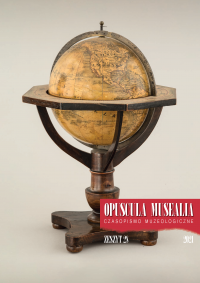Zastosowanie lecznicze i kosmetyczne wody różanej według dziewiętnastowiecznej literatury farmaceutycznej oraz medycznej
Medicinal and cosmetic uses of rose water according to 19th century pharmaceutical and medical literature
Author(s): Krzysztof KoniewiczSubject(s): History, Archiving, Studies of Literature, Social history, Source Material
Published by: Wydawnictwo Uniwersytetu Jagiellońskiego
Keywords: rose water; history of pharmacy; history of medicine; natural medicine; 19th century
Summary/Abstract: Floral water, also called hydrolate, is a secondary product of the distillation process of aromatic plants. In the Middle Ages, rose hydrolate, according to medical advice of the time, protected against plague spread by ‘miasma’. In nineteenth-century medical and cosmetic applications, rose water was often used as an aromatic and soothing ingredient, forming a base while giving the product the right consistency. It was also the main ingredient in eye medications (in Latin: Collyrium), anti-inflammatory ointments and cosmetic products, including perfumes, aromatic waters, nourishing creams, lubricating pomades and numerous fragrances. In the 19th century medical and pharmaceutical literature, rose water was seen as a mainly aromatic substance which added a pleasant fragrance to medicines and cosmetics. The aim of this article is to compare the recipes for medicines and cosmetics containing rose water from 19th-century apothecary’s manuscripts in the library of the Pharmacy Museum of the Jagiellonian University Medical College with the medical and pharmaceutical literature of the period.
Journal: Opuscula Musealia
- Issue Year: 2021
- Issue No: 28
- Page Range: 7-21
- Page Count: 15
- Language: Polish

